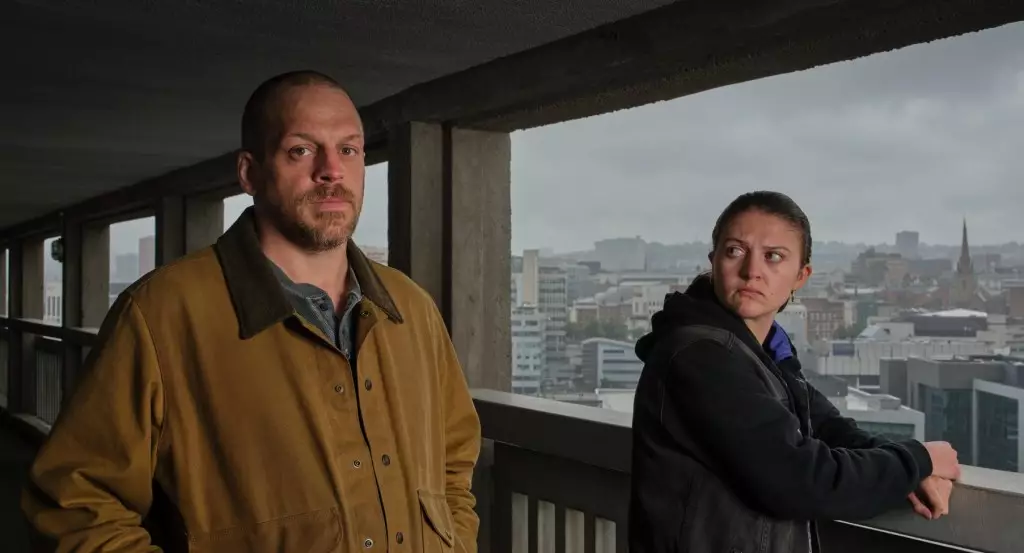“Reunion,” a drama that delves deep into the complexities of revenge, presents an innovative and powerful lens on the deaf experience. This series, crafted with a unique blend of spoken English and British Sign Language (BSL), challenges conventional storytelling while offering a fresh perspective on the revenge thriller genre. The creator, William Mager, crafts a narrative that begins as a typical suspenseful thriller but transcends into an emotionally charged narrative that seeks not only to entertain but to resonate on a personal level. This duality—where thrills meet heartfelt storytelling—marks “Reunion” as a groundbreaking effort, especially within mainstream media.
Challenging the Status Quo
Historically, narratives that center on disabled characters have often been told through a hearing and “able-bodied” viewpoint, overlooking the genuine experiences, challenges, and cultures of those individuals. “Reunion” critiques this very paradigm. Mager himself embodies the deaf experience, bringing authenticity to his storytelling. “The elements relating to the deaf character and community were easy to write, because you’re writing your own truth,” he shares. This direct connection to his narrative allows for a deep-seated authenticity that’s often absent in mainstream dramas. By positioning a deaf character at the forefront, Mager does more than simply change the protagonist; he opens doors to previously uncharted stories that amplify the deaf community’s voice.
The Heart of the Story
The plot follows Daniel Brennan, portrayed by Matthew Gurney, who finds himself navigating post-incarceration life as a deaf man. This layered narrative explores themes of isolation and disconnection within both the deaf and hearing communities. The ostracism Daniel faces underscores a harsher reality for many individuals in similar circumstances, compelling viewers to confront the often-ignored dynamics of societal inclusion. The personal stakes rise further with his estranged relationship with his daughter, Carly (Lara Peake), adding emotional stakes that enrich the narrative.
Filmed in Sheffield, England, the selection of this setting provides a gritty realism that enhances the overall atmosphere of the show. The industrial backdrop merges seamlessly with the intensity of Daniel’s journey, illustrating how environment shapes personal experience. The series further showcases a talented ensemble cast, including Anne-Marie Duff, Eddie Marsan, and Rose Ayling-Ellis, whose performances breathe life into the intricate web of relationships woven through Mager’s script.
A Collaborative Effort Toward Representation
Director Luke Snellin emphasizes how crucial it was for “Reunion” to feature deaf crew members alongside the cast. This commitment to authentic representation reinforces the show’s foundation, ensuring that the storytelling process itself respects the lived experiences of those with hearing loss. Executive Producer Gwen Gorst elucidates the objective, expressing that fostering inclusivity within the crew helps to create a show that feels both bilingual and integrated. The efforts to include a deaf perspective in the crew set “Reunion” apart, aiming for a genuine representation that resonates with audiences beyond the screen.
Such earnest inclusiveness in production sends a strong message to Hollywood and beyond: that storytelling empowerment should extend to all characters, regardless of their abilities. Supporting this are the initiatives from BBC Studios, which is keen to present “Reunion” to a broader market that is ready for this engaging blend of thrills and deep character exploration.
The Ripple Effect of Inclusive Storytelling
As society becomes more aware of the multifaceted nature of inclusion and representation, “Reunion” emerges as a template for future productions. This series is not merely a crime thriller; it stands as a narrative catalyst that challenges how stories involving deaf characters are created and communicated. By merging compelling storytelling with the desire for genuine representation, it promises to leave an indelible mark on audiences, questioning the traditional narratives that have dominated the screen for far too long.
“Reunion” is ultimately an affirmation that the screen can become a rich tapestry of diverse experiences, each thread contributing to a fuller understanding of the world. This newfound approach invites viewers into the heartbeat of the deaf community, urging audiences not just to watch but to listen—and more importantly, to understand.

